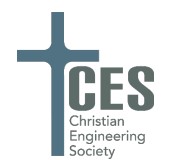Document Type
Paper
Abstract
Cutting-edge biomedical research often relies on innovative tools from the field of engineering. Some of these tools are designed to investigate or probe a niche, analyzing its characteristics and affordances. Other devices are engineered to create a niche in which a specific, unique interaction can take place, while the outcomes are carefully monitored. This paper will focus of the latter and, more specifically, the production of a niche for inducing promising interaction between cancer cells and certain types of fungi. Preliminary research suggests that when maintained in close proximity to breast cancer cells, mushroom mycelia secrete compounds which trigger the programed cell death of the cancer cells. Experiments are currently being conducted to assist in the development of an appropriate scaffold to facilitate this interaction.
Since niche construction can be viewed as the perception, utilization, destruction and creation of affordances, it is proposed that affordance-based design and reverse engineering techniques will prove advantageous in this work. The specific design question being asked is: “What set of affordances is necessarily to achieve a high success in the organism interactions, as well as ease of experimentation and repeatability?” As with all new creations, there has been much trial and error. The process for engineering this device was to first create a setup that would allow for the most basic affordances, i.e. allows for both the mushroom and cancer cells to survive, and then to add on more unique affordances. At this point, a prototype has been fully constructed and the physical parameters are being adjusted to allow for ease and accuracy of analysis.
Affordance-based design allows for a more holistic understanding of the process and the created niche. The utilization of affordances in the understanding of any niche or system would allow for a greater interchange of information between disciplines, including Christian theology. While an individual affordance does not necessarily serve as an indicator of purpose or teleology, layers of interdependent affordances in both space and time point to the work of an engineer. Thus, this concept of affordances can be used to understand such things as a biblical creation, or can potentially be helpful in describing how a Christian worldview is consistent with the fields of science and engineering.
Creative Commons License

This work is licensed under a Creative Commons Attribution-Noncommercial-No Derivative Works 4.0 License.
Copyright
© 2017 Dominic M. Halsmer. All rights reserved.
Publication Date
June 2017
The Engineering of a Microscale Niche to Test a Novel Anti-Cancer Agent
Cutting-edge biomedical research often relies on innovative tools from the field of engineering. Some of these tools are designed to investigate or probe a niche, analyzing its characteristics and affordances. Other devices are engineered to create a niche in which a specific, unique interaction can take place, while the outcomes are carefully monitored. This paper will focus of the latter and, more specifically, the production of a niche for inducing promising interaction between cancer cells and certain types of fungi. Preliminary research suggests that when maintained in close proximity to breast cancer cells, mushroom mycelia secrete compounds which trigger the programed cell death of the cancer cells. Experiments are currently being conducted to assist in the development of an appropriate scaffold to facilitate this interaction.
Since niche construction can be viewed as the perception, utilization, destruction and creation of affordances, it is proposed that affordance-based design and reverse engineering techniques will prove advantageous in this work. The specific design question being asked is: “What set of affordances is necessarily to achieve a high success in the organism interactions, as well as ease of experimentation and repeatability?” As with all new creations, there has been much trial and error. The process for engineering this device was to first create a setup that would allow for the most basic affordances, i.e. allows for both the mushroom and cancer cells to survive, and then to add on more unique affordances. At this point, a prototype has been fully constructed and the physical parameters are being adjusted to allow for ease and accuracy of analysis.
Affordance-based design allows for a more holistic understanding of the process and the created niche. The utilization of affordances in the understanding of any niche or system would allow for a greater interchange of information between disciplines, including Christian theology. While an individual affordance does not necessarily serve as an indicator of purpose or teleology, layers of interdependent affordances in both space and time point to the work of an engineer. Thus, this concept of affordances can be used to understand such things as a biblical creation, or can potentially be helpful in describing how a Christian worldview is consistent with the fields of science and engineering.

